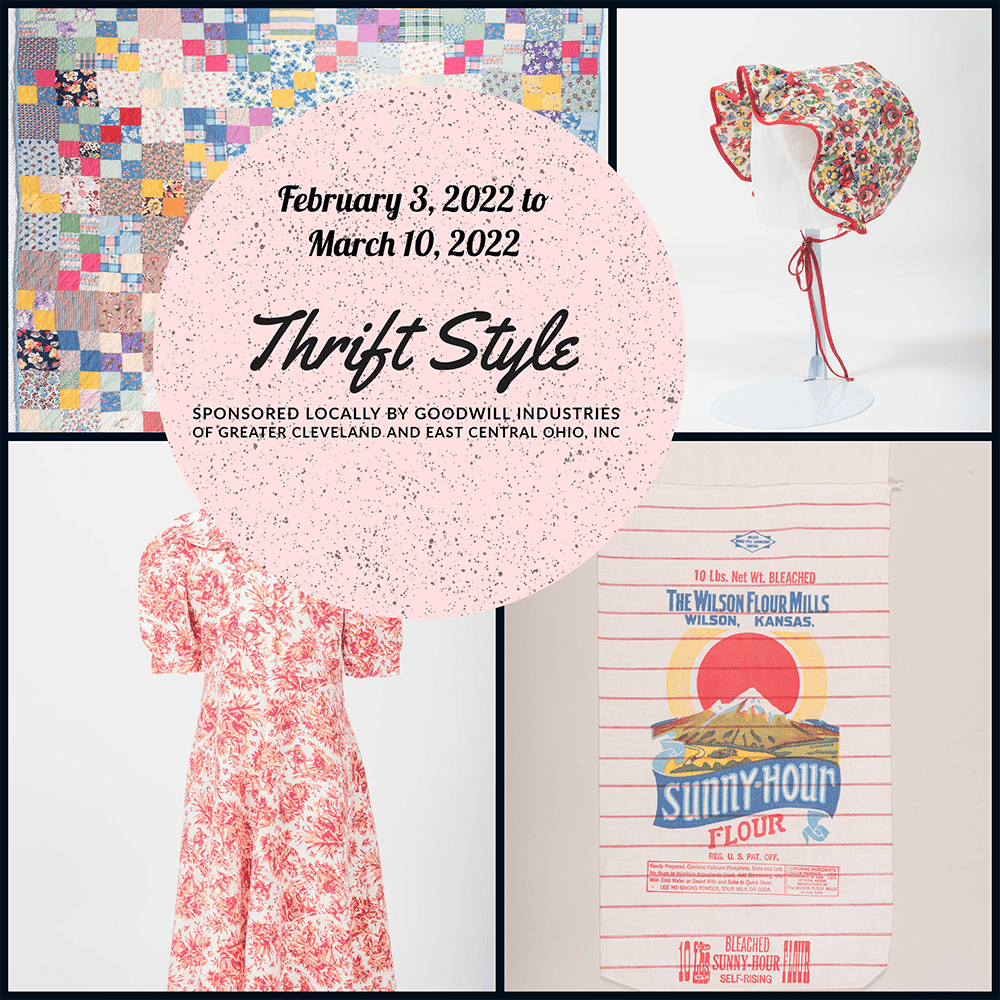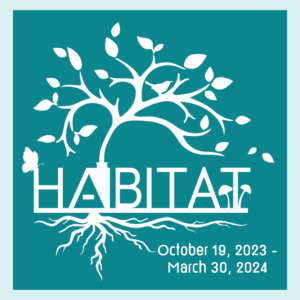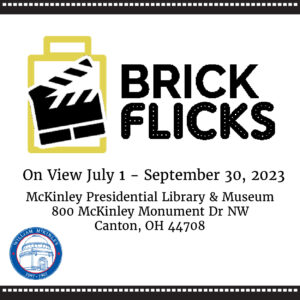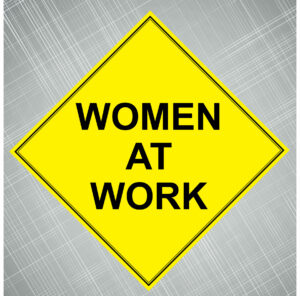Sponsored locally by Goodwill Industries of Greater Cleveland and East Central Ohio, Inc.
The traveling exhibition Thrift Style opens in the Keller Gallery at the McKinley Presidential Library & Museum on Thursday, February 3 during regular business hours. This exhibition offers a snapshot of 20th century domestic life, when recycling was as critical as it is today, and it provides one of the best examples of upcycling in our nation’s history. The exhibition is sponsored locally by Goodwill Industries of Greater Cleveland and East Central Ohio, Inc., who will be showcasing items from their retail stores in a section of the Keller Gallery.
Thrift Style explores the reuse of feed sacks to make clothing and other household objects and illuminates how the “upcycling” of these bags mutually benefited twentieth-century consumers and businesses. With forty-one works from patterns to garments, it serves as an example of past ingenuity that can inform today’s efforts towards sustainability.
The exhibition, organized by the Historic Costume and Textile Museum and the Marianna Kistler Beach Museum of Art, both located at Kansas State University, provides a nostalgic view into American ingenuity, sensibility, and optimism during a particularly challenging time of economic hardship and war—the period of the Great Depression and World War II. The reuse of feed, flour, and sugar sacks was a cost-saving and resource-saving approach employed by homemakers to make new items to meet their families’ needs.
In the 1920s and ‘30s, manufacturers began producing patterned and colored feed sacks to give home seamstresses more options. During World War II, the federal government limited fabric use for individual garments and homemakers were obligated to use thrifty approaches to repurpose what was available to them. As fabrics from feed sacks were not considered a limited resource, women turned to them as an accessible and patriotic option during the war effort. In response, trade organizations and manufacturers promoted the thrifty use of feed sack fabric by publishing how-to brochures and booklets with clothing designs, mending instructions, and other suggestions for restyling clothes.
The artifacts in the exhibition demonstrate a mutual goal of sustainability, with local businesses—mills and feed and seed operations—tailoring product design and marketing campaigns to attract customers; and consumers using their imaginations and practical skills to tailor clothing, aprons, quilts, dolls, and more out of the industry’s byproduct: feed sack cotton.
The exhibition will be on view through March 10, 2022.

